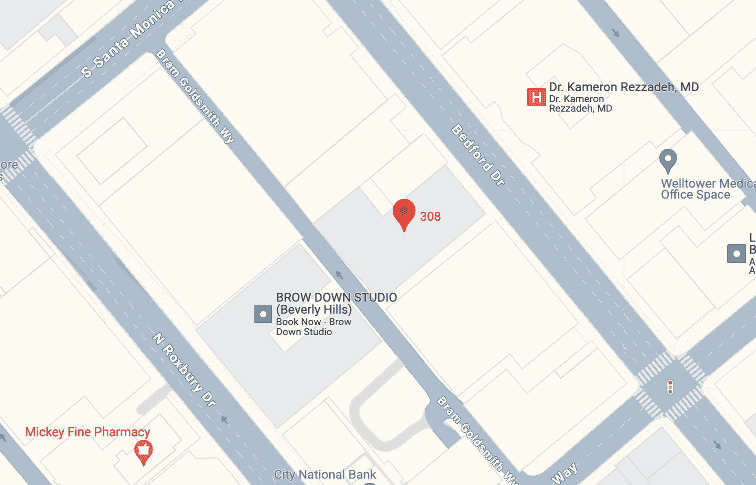Pilonidal cysts are one of those things people rarely discuss unless they have to. And when you’re in the clutches of them, the only thing you want is to free yourself. The good news is that surgery can bring relief. Whether you’re gearing up for pilonidal cyst excision surgery or your doctor has suggested the procedure, having an idea of what to expect can be hugely helpful in demystifying the process. This blog will guide you on what to expect, from what it’s like once you get into the clinic to waking up when it’s all over.
Pilonidal Cyst Surgery What Is The First Step Of The Surgery?
The first stage is generally begun the day before the surgical procedure. Your surgeon should have talked to you about this in consultation. That’s when they’ll break the news about whether your cyst needs draining, or cutting out, or if you need more of a flap procedure. If the area is infected, they could address the infection first with antibiotics, or in some cases by making a tiny incision to relieve pressure.
The day of the procedure You will arrive at the surgical center or hospital the morning of the procedure day and have a quick pre-op experience. That could entail undressing and donning a gown, signing consent papers and having a consolatory conversation with the person who is going to place the anesthetic. In most cases, pilonidal cyst removal surgeries are also performed with a local anesthetic plus or minus sedation (which will make you drowsy) or a general anesthesia (if the cyst is large or very deep).
What Is The Surgeon Actually Doing?
Second, once you are adequately numbed up, your surgeon will go on to disinfect the skin in and around the pilonidal cyst. They will then cut into the cyst and open the infected tract. If it’s a straightforward incision and drainage procedure, the surgeon opens the incision and drains the cavity.
But if it becomes larger or there are recurrent infections, complete pilonidal cyst excision is required. This does so because the surgeon tries to make away not just the cyst but the entire sinuses tracts with any surrounding irritated tissue. This decreases the risk of the cyst returning. The whole operation may take under an hour.
Do They Stitch Up The Wound Or Do They Leave It Open?
Once the cyst is removed, the surgeon has a few options. Sometimes they’ll let the wound heal open from the inside. This is what’s known as secondary healing, and while it is a longer process, it poses less of a risk of the issue returning.
In other cases, they may decide on primary closure, to sew the wound back up.
This also tends to heal faster, but it can be associated with a higher risk of cancer returning. It also tends to recover more quickly, but can have a greater risk of cancer returning. Whether it’s a question of what wieldy surgical technique you want to be subjected to or that your doctor wants to subject you to— or both — going forward with either may also depend to some extent upon the size of the cyst, as well as your general mental and physical well-being because apparently there’s now a weight limit on pilonidal cyst excision surgery recovery and the effectiveness of past efforts to deal with the problem.
What Happens Immediately After Surgery?
If your wound is a bit more open, gaping a bit, you may need to pack it with gauze and change the dressing daily after cleansing the wound. The imperative for the control of infection is acutely high in a healing setting. When tending to a wound, infection has to be avoided as this hampers healing. As you wake up from anesthesia, nurses will continue to watch you closely. And you are bound to be groggy and nauseous at first, particularly if you’ve been given general anesthesia. It will typically go away in a few hours. If you had local anesthesia and the operation took place in the morning, you could even go home that day.
You will learn instructions on medicine and wound care in detail, and what you can expect in the next couple of days before you leave home. If your wound is open, you may need gauze packing, requiring daily dressing changes.
How long does it take to recover from pilonidal cyst surgery?
If a wound was recently lanced or sewn shut, you’re back to normal in weeks. For open wound healing it is four to eight weeks, sometimes more, depending on the response of your body healing.
In the meantime, it’s wise to keep the area clean and dry. Your doctor will also tell you that you can’t sit for that long, though if you’re on the heavier side, then you cannot sit on it for very long, and in fact they can offer some suggestions on how to minimize the amount of chaffing around the point of where the tailbone is. You may also get antibiotics or pain meds to help manage symptoms.
Can the Cyst Return?
The problem is, pilonidal cysts are truculent. And if they were surgically removed, they might sprout up again, especially if the skin and underlying sinus tracts weren’t entirely excised. This is why post op care is crucial. Best to prevent it by keeping the clean area hair-free.
For some individuals who have experienced recurring cysts, a flap operation, similar to a cleft lift, may also be considered. This helps the cleft between the cheeks from flattening, where hair and debris can get lost, build up and contribute to more cysts.
What to Watch While Recovering
Look out for signs of infection, even if everything appears ok Signs that something is not right are redness, warmth, tingling, a bad smell, fever or increased pain. If something feels off, call your surgeon. It is far better to be cautious and address problems early.
Also be patient with recovery. Now, it’s not glamorous and you may tire of changing dressings, but it really will dictate your long-term outcome.
Are You Free To Return To Work Or School Immediately After?
Pilonidal cyst removal Recovery A few days off of work are needed for recovery after pilonidal cyst removal for most people. If you have a sit-down job and must sit for extended periods, the surgeon may ask you to wait a little longer or even provide a cushion to help relieve pressure on the surgical area. In case the wound is open, dressing changes during the first week or two may require someone else to assist you.
It’s fine, for the most part, to do something gentle, as long as it doesn’t reinjure the area. “The best defense: keep walking so your blood can flow.” Just enough that I wasn’t coming off as doing something freaky, or lunges that would irritate the cut and then bacteria would enter the cut.
How’s life after a pilonidal cyst?
It’s generally a whole lot better after excision of pilonidal cyst surgery, is over. Healing feels like a very relieved time for many of us. Gone is the pain, the drainage, and the nagging worry that seem to be part and parcel of a pilonidal cyst that just won’t go away, and most importantly, the freedom to live life to the fullest without fear of the cyst returning.
How Would You Be Able to Find The Perfect One?
Selecting an experienced, skilled surgeon is what matters most to achieving the ideal outcome. Try to locate a surgeon specializing in pilonidal disease with a solid track record of successful outcomes. Read, look for feedback on – inquire about the one that they like – don’t be nervous about consulting two or five vendors until you’re comfortable.

Conclusion
Surgery for a pilonidal cyst may sound scary, but it’s a relatively low-key operation with a fast recovery, and the excision surgery pilonidal cyst provides genuine relief for folks who have chronic pain, frequent draining, and repeat infections. And it takes a long time before you begin to see the light at the end of the tunnel – but the realization that there is a way forward through modern surgical practices, excellent aftercare and some personal long-term responsibility, can go a long, long way to putting those bags under your eyes to bed, and well – you can start feeling like yourself again.








